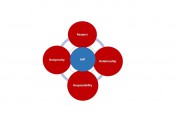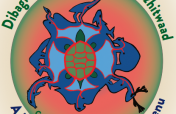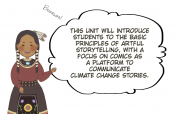Fighting Climate Change, With Change!
Climate change is a big, complex issue. It affects all people, cultures, and economies which rely on a healthy environment. We can reduce its impacts by making small changes in the choices we make that can add up to big results. In this section, you will act on the climate change knowledge you’ve gained through scientific and cultural investigations and create a service learning project to help reduce climate change impacts. Let’s get started!
Reflect on the issue
Look, observe, and listen to climate change issues in your school and community.
Take a few minutes to think about how you would respond to the questions below. Reflect on how your lifestyle, culture, and what you like to do depends on and impacts the climate. What interests you about climate change and how it is affecting the environment, your community? What can you do to help?
After you are done, write down answers to these questions in your journal.
- What are your concerns about the climate change and its impact on your culture and community?
- What concerns do other people have?
- Are they the same as yours?
- What do people need to know about climate change to help reduce its impacts?
- Who are the people who could use a helping hand in solving climate change issues?
- What part of the environment could use your help to reduce climate change or adapt to its impacts?
- Is there a part of the climate change issue that is being overlooked, neglected, or incorrectly represented that you could help clarify?
- What groups are already involved in reducing climate change? How can you help them?
Build on your expertise and leadership style
Build a service learning project that reflects your personal leadership style and uses talents and skills you already have.
Leadership styles refer to how we relate to the world and what motivates us. Most people are a combination of styles, with one being most preferred. Knowing your personal leadership style will help you build the type of project that will best use your personal strengths and preferences. It may also suggest potential partners to help with your project who can bring different skills and perspectives to strengthen your project.

If you are doing a service learning project as part of a classroom assignment, we encourage you to talk with your teacher to make sure educational standards for your school, grade, and state are met. Your teacher can help you identify service learning experiences that will help you learn more about an issue and take meaningful action to help address it in your community.

Which statement best reflects how you like to relate to a problem or situation? This can help fine tune a project idea that compliments your leadership style.
- I most like working with and being concerned about people. Projects that help get people involved and engaged together are of special interest to people with this leadership style.
- I most like analyzing information, numbers, and data to find solutions. Projects that involve logic, analyzing and organizing details, facts, and figures are of special interest to people with this leadership style.
- I most like being adventurous and taking action. Projects that involve doing something physical or apply a unique approach to solve an issue are of special interest to people with this leadership style.
- I most like finding practical solutions. Projects that result in getting the task done by applying efficient solutions are of special interest to people with this leadership style.
If you are in a group share your leadership styles and discuss how everyone will work together and to build on strengths each of you have. Take a minute and think about what skills and expertise you can apply to make a difference!
READY TO GO - PROJECT IDEAS
Climate Action Planning Tool
Project Description
Project PDFProject LinkThis planning tool integrates indigenous cultural values of respect, relationships, responsibility, and reciprocity to help you explore ideas for taking action on climate change.

Investigate the Tribal Climate Adaptation Menu
Project Description
Project LinkDibaginjigaadeg Anishinaabe Ezhitwaad - A Tribal Climate Adaptation Menu provides a framework to integrate indigenous and traditional knowledge, culture, language and history into the climate adaptation planning process. While the menu is designed for land managers, it offers important perspectives to anyone interested in learning more about indigenous approaches to climate adaptation.

Learn How to Use Comics to Take Action on Climate Change
Project Description
Project LinkLearn how to apply the basic principles of artful storytelling, using comics as a platform to communicate climate change stories. Tap into your visual and linguistic creativity and construct your story about climate change that is fun and engaging, all the while being informative and compelling.

Conduct a Phenology Study Using Project Budburst
Project Description
Project LinkProject BudBurst is a national citizen-science website to track place-based evidence of climate change by observing changes in plants. This website provides a fun, ready-made service learning tool to explore how climate change is affecting plant beings of cultural importance to the Lake Superior Ojibwe people. Use Project Budburst to gather place-based evidence of how climate change may be affecting plant beings in your community.

Plan your project
Reflect on the issues that concern you and the skills you have to come up with a plan. Remember to come back and look at this and make adjustments as needed. Use the Service Learning Template to plan your project. Keep notes of what you are doing, your observations are during the project, what’s working or what should be improved, and other things that you consider important. These will be important later when you reflect about your project.
1. Brainstorm ideas. Start with the big “SO WHAT?”
What do you want your project to accomplish? What are the key ideas or concepts you want to teach others, demonstrate, or cover in your project? How can you be of service to your community and the environment while fighting climate change?
Think up ideas and projects that interest you, things that you would like to do to reduce the impacts of climate change that can help you achieve your goal. Organize your ideas and as you go along, decide if it is something that you would be able to accomplish. As you are brainstorming, keep in mind how long the project will take. You will probably have a limited time to be able to work on your project so time management is important. Think about the resources and materials you will to accomplish your task. Will you have access to everything you need? If not, you may have to rethink your idea or make adjustments.
Here are some questions to guide you in planning a project:

- What is it you want to accomplish with this project?
- Why is this issue important?
- What can I do to address climate change?
- How will it impact the environment and your community?
- What are some key ideas and/or concepts you want to teach, demonstrate or cover?
- What am I nervous about?
- What am I looking forward to?
- What might happen in this project?
- What do I think I will learn from this experience?
Need a project idea? Click here to get started.
2. Develop goals and objectives
Once you have a project idea, develop a specific goal(s) and objectives to guide the project development. A goal summarizes what you expect to learn or accomplish in your project. The goal should help address the big “so-what” that you identified above. Example of a goal:
My project goal is to increase my school’s use of recycling to reduce climate change impacts
An objective describes how you will reach that goal. Objectives are “SMART”. They are Specific, Measurable, Achievable, Relevant and Time-Specific. Example of project objectives:
1) Increase the number of pounds recycled by students per week.
2) Improve students' awareness how recycling reduces climate change impacts.
3) Create a student run school recycling program by second semester.
A project may have more than one goal or and usually has several objectives. Goals and objectives guide plan for your project.
3. Fine-tune your project
Once you have a project, goal(s), and objective(s), it is time to get specific about how you will accomplish your project. Use these questions to fine-tune your ideas. Make sure that you will be able to complete all of the tasks you are planning to do. If these questions raise concerns, you may want to modify your project. To fine-tune your project develop a:
Timeline for the project. How long will you have to work on this? Be sure to include time for reflection after you complete the project.
List of Resources and Materials. What do you need to complete this project? Will you be able to get all of the resources in enough time? Are all of the materials you will need available or do you need to order them?
After you have these answered, or as you are answering these questions, you are ready to start your project.
4. Share your work
After you have completed your project, it is time to analyze your results and draw conclusions about what happened. It’s important to share your results so others can learn from your service project.
There are many different ways to share your project and the results.
Some ideas include:

- Present your project orally to your other students, at a meeting, over a webcast, on YouTube.
- Create a visual aid, such as a poster, and display it for others to learn from.
- Write a press release for the media about your project and results.
- Create a video, website.
- Post your project activity on the TALKING CIRCLE.
Getting recognition for what you have accomplished allows you to share the work and it can be fun. It helps you to share the positive impacts of your project and reflect on what you have learned and accomplished.
5. Reflect on what you have learned
This is one of the most important parts of a service learning experience. It is time when you move from participation in an activity to deeper understanding of what it means in terms of learning, personal development, and service to others. Some examples of questions to reflect on after the project has been completed may be:

- What has been the best part of the project and why?
- What has been the hardest part of the project and why?
- What have I learned that I didn’t know at the beginning of the project?
- What is the most valuable thing I’ve learned during the project and why is it so valuable?
- If I could make changes in the lives of those who benefitted from my project, what changes would they be and why?
- How do I feel about the project?
- What concerns did I have about the project?
- What is one thing I intend to do differently as a result of what I learned?
- Are there ways that I could stay involved in this project in the future?
- How do I think differently about the critical issue(s) I’ve been working on as a result of my project?
These are just suggestions. You may answer as many or as little as you feel you need or think up your own questions. Record your reflections in a project journal.
CONGRATULATIONS!
You have just created a plan for your personal service learning experience. Now it’s time to act on your knowledge and implement your service learning project.
Visit the TALKING CIRCLE to see other student projects, get ideas, and report the results of your service learning project.